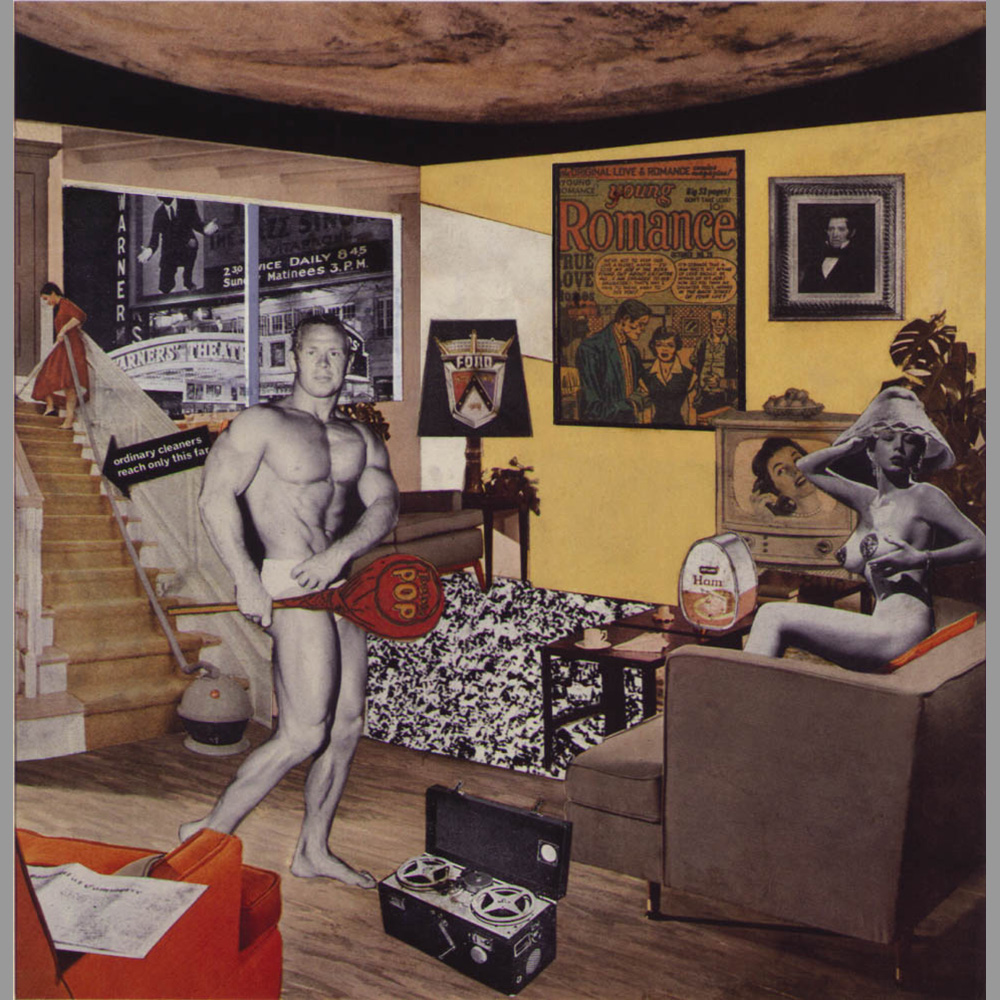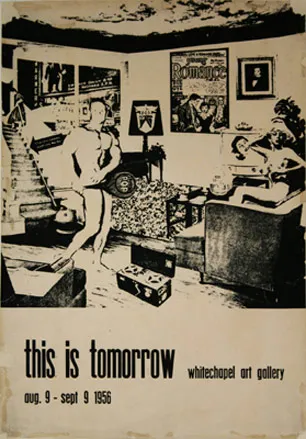
Created for the 1956 “This is Tomorrow” exhibition at the Whitechapel Gallery, Richard Hamilton collaborated with fellow artist John McHale (1922-1978) and architect John Voelcker to craft a “fun house” structure. This creation incorporated imagery that encapsulated the iconography of the contemporary world as of 1956.
In his book “Collected Words” (Thames and Hudson, 1982), Hamilton outlines the essential components of the imagery:
- Journalism
- Cinema
- Advertising
- Television
- Styling
- Sex symbolism
- Randomization
- Audience participation
- Photographic image
- Multiple image
- Mechanical conversion of imagery
- Diagram
- Coding
- Technical drawing
Hamilton’s vision for the exhibition elucidates a comprehensive portrayal of modern society’s facets and underlines his nuanced perspective on these elements.

The collage created for the exhibition poster now in Kunsthalle Tübingen, Zundel Collection was created by using images from Glossy American magazine collected by John MacHale.
Tate Gallery describes the image as:
“This image is among the most famous in British post-war art. It has come to define the rise of consumer society in the mid to late 1950s and is an icon of Pop art, although the original collage created in 1956.”
Richard Hamilton, exhibition catalogue, Tate Gallery, London 1992, pp.148-9, reproduced p.149.
Richard Hamilton, exhibition catalogue, Solomon R, Guggenheim Museum, New York,